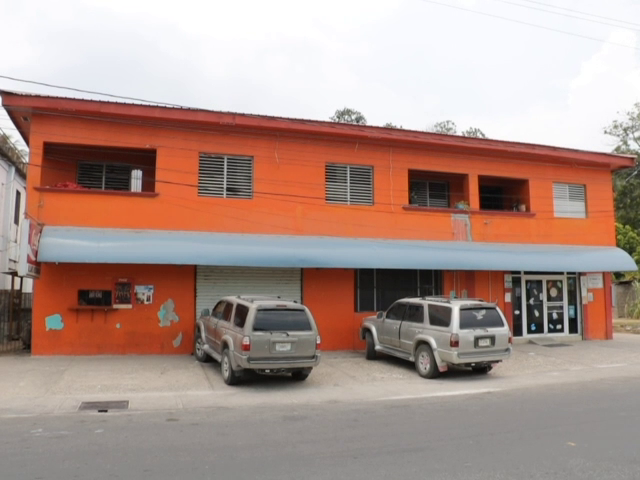The nation’s latest murder victim is an Asian businessman from Santa Elena Town. Sheng Wen Wu, the proprietor of Allan’s Restaurant, was gunned down a stone’s throw away from his place of business. Wu arrived home at three a.m. on Thursday, inside his grey Toyota Forerunner. Unbeknownst to him, a pair of gunmen lurked in the area. When he got out of his vehicle, they pounced on him and demanded that he hand over the money. He was then shot twice. As he fled the scene on foot, the men pursued him on a motorbike. He was shot three more times and left for dead on the shoulder of the George Price Highway. According to business owners in the area, this is not the first robbery that has occurred in the area recently. Unfortunately, this one proved to be fatal. So, what has led to the uptick in crime, business owners believe that criminals are taking advantage of the fact that the Hawksworth Bridge is closed for renovations. The police station sits at the foot of the bridge on the other side of the Macal River. News Five’s Paul Lopez report.
Paul Lopez, Reporting
A Santa Elena businessman was gunned down near his establishment in the early hours of Thursday morning. Reports are that just after three o’clock, Sheng Wen Wu arrived in front of his restaurant, just across from the Social Security Board, when he was approached by two gunmen on a motorbike. The men reportedly attempted to rob Wu and he tried to escape. He was shot twice in front of his restaurant. He then fled on foot towards the Hawksworth Bridge. About one hundred yards away, the gunmen caught up with him and shot him dead. We spoke off camera with someone who told us that crime has increased in the area since the Hawksworth Bridge was closed for renovations a month ago.
Voice of: Santa Elena Food Vendor
“The main thing is that things the happen mostly now because the bridge close and now we don’t have the patrol unit like that the pass like how they use to pass. They are on foot but it takes a little while for them to come around. That is the main one right there. After nine most of the businesses they close and whosoever are left open to continue working through the night, we are the ones that have to look out for each other.”
Reports are that gunmen have targeted at least three businesses in the area recently, a supermarket, a meat shop and a vegetable vendor. With the uptick in crime, this food vendor is considering leaving her business behind for the sake of her safety.
“Yes, I even the think about give up, because you have to the watch your back and people may think you the make money, but at this time of the year you are not making money. And with the bridge being closed, you nuh the make no kind of money and you just the struggle and the little bit you make you are just investing it back again and people will come and hurt you for the little bit of money you have.”
“I just know he as a nice person, but I never really get to know him like that. I just purchased some stuff from him and that’s all.”
Reporter
“Ok, but he was a struggling businessperson as well.”
“Yes, just like myself, he was struggling as well. All of us, from the time the bridge closed down all of us have been struggling, big time. You could ask anybody and all of us the struggle. We even tried to plea with the town council to see if they could do anything about it so that the bridge could open faster than the time they say, because they said six to seven months. But I don’t know if it will happen.”
We reached out to Mayor Earl Trapp who informed us that contrary to what the business owners may be observing, police patrols have increased in the area. Mayor Trapp says that he believes the time the incident occurred may have contributed to the brazenness of the killers.
On the Phone: Earl Trapp, Mayor, Santa Elena/ San Ignacio
“To be honest, according to the O.C., police patrols have increased in Santa Elena because of that said reason, because the bridge is closed and one of the reasons why I sought to ensure that the low lying bridge would be a two way is for the said reason, to ensure that vehicles would be able to traverse along that path, crossing the low lying bridge into the George Price Avenue and the George Price Highway. So, for that said reason I went the extra mile and convinced the other parties we must allow the low-lying bridge to be two way, especially for smaller vehicles. When you look at the time that happened, that is three o’clock in the morning, so there is very little that maybe police could have done or people could have seen.”
Reporting for News Five, I am Paul Lopez.
